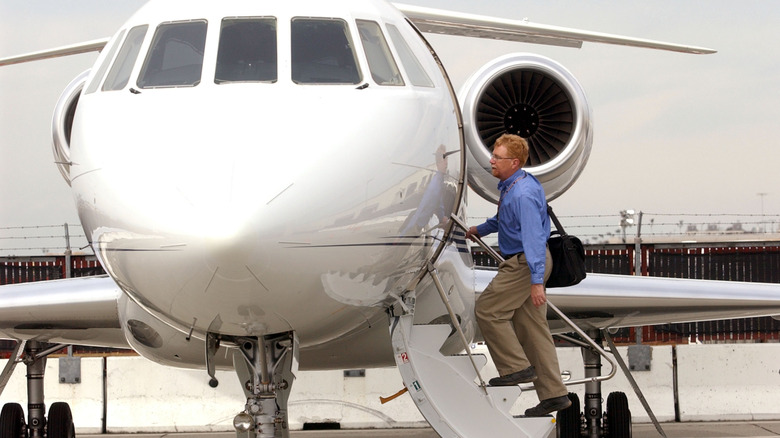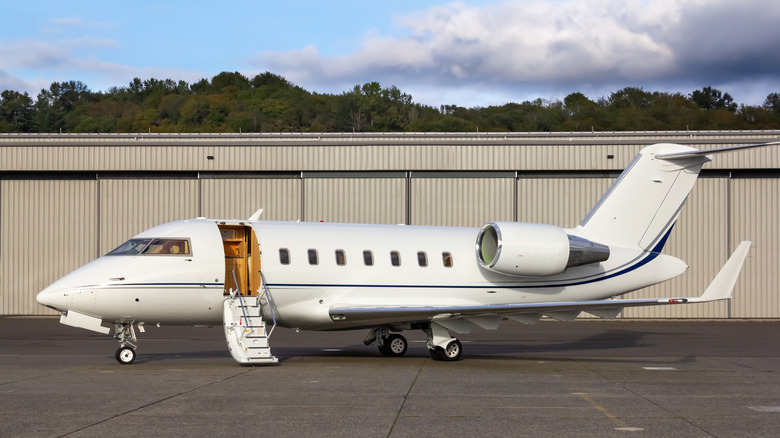What Are The Pros & Cons Of Owning Or Leasing A Private Jet? Here's What You Should Know
Private jets have long symbolized luxury and exclusivity, but access to them has grown sharply in recent years. From 2000 to 2022, the global private jet fleet grew from 10,000 to over 23,000 aircraft. Business aviation shows no signs of slowing, with more than 8,000 new jets expected in the next decade. In 2024, there were 3.6 million business jet flights worldwide — 30% more than in 2019. Companies like NetJets, VistaJet, and Flexjet are capitalizing on rising demand by pushing sustainability, personalization, and tech-forward services.
Why the surge? For high-net-worth individuals and corporations, commercial travel often doesn't cut it. Private aviation offers time savings, flexibility, and privacy that scheduled airlines can't match. But, as with everything in life, there is a catch. In this breakdown, we explore the joys and drawbacks of having a private jet — owned or leased — to help you figure out if the luxury is truly worth it.
Privacy, comfort, and flexibility: private jets lead here
Private jet ownership gives you something commercial airlines can't: total control over who's on board. You don't sit next to strangers and decide who flies with you. This is a big plus for business executives, celebrities, and anyone needing confidentiality. Cabin design is another huge benefit. You can customize the interior to your liking, from seating and lighting to onboard Wi-Fi and even in-flight meals.
Flexibility is also unmatched. You can fly directly to smaller regional airports closer to your destination. Need to leave earlier or reroute mid-trip? No problem; it's your plane. You're no longer competing for aircraft availability or navigating blackout dates. Commercial airlines have come a long way with business class and first class, but they still can't offer true privacy or personalized service. Schedules are fixed, routes are limited, and even minor delays can cost you hours or a full day.
Private jets even fly faster than commercial planes. Most private jets cruise between Mach 0.78 and 0.81 (about 515 to 621 mph). High-performance models like the Gulfstream G650 can reach Mach 0.925 (710 mph), and the upcoming Bombardier Global 8000 has hit Mach 1.015 in testing, briefly breaking the sound barrier. For travelers who value privacy, comfort, and time efficiency above all else, a private jet is hard to beat.
Flying private isn't just expensive — it's a full-time commitment
But that control comes with a steep cost, with the world's largest jet costing more than $400 million. Very light jets, on the other hand, like the HondaJet Elite are priced under $5.5 million, and large jets like the Bombardier Global 5000 range from $35 million to $60 million. Buying used can save money, but it may involve additional costs for upgrades or refurbishments. The price of owning a jet doesn't stop at the purchase, though. Annual operating expenses typically range from $500,000 to $1 million and include routine maintenance, unexpected repairs, hangar fees, insurance, and crew salaries. These expenses are the owner's responsibility and can vary depending on the aircraft type and usage. For buyers, consultants, and management companies, it can help streamline both the acquisition and day-to-day operation of the jet.
If you're not flying frequently, it's easy to underuse the asset. Meanwhile, it's still depreciating. On average, small business jets lose about 23 to 25% of their value in the first five years, while large or long-range jets can depreciate by up to 26%. Factors like age, flight hours, cycles, maintenance history, and outdated technology significantly affect resale value. Some models, like the Gulfstream G650, tend to retain value better due to strong demand and advanced performance features.
Commercial flights require none of this; you book, show up, and fly. There are no long-term financial obligations, no maintenance schedules, and no hangar space to lease. It's the obvious choice for those who don't want to manage an asset with so many moving parts.
Environmental impact, public perception, and long-term use
Private jets have a much higher carbon footprint per passenger compared to commercial planes. If you care about sustainability or your public image, this is something to think about. Critics often call private aviation tone-deaf in an era of climate concern, and there's increasing pressure to curb its growth. Some private jet owners use carbon offsets or newer jets that run on sustainable aviation fuel (SAF). But those solutions are still emerging, and don't fully erase the environmental cost.
Commercial airlines aren't perfect, but they have fewer emissions per person since they move more people. They're also under tighter regulatory scrutiny for emissions and are adopting greener technologies faster than private aviation. Then there's utility. If your travel is infrequent or limited to major cities, owning a jet may not make sense long-term. Commercial flights can get you where you need to go with fewer headaches, even if they take longer. Private jets are appealing (and in some cases, extremely useful), but they're not always the smartest long-term play. And before you dive into all of that, the first question you need to ask yourself is whether you even make enough to own a private jet.



